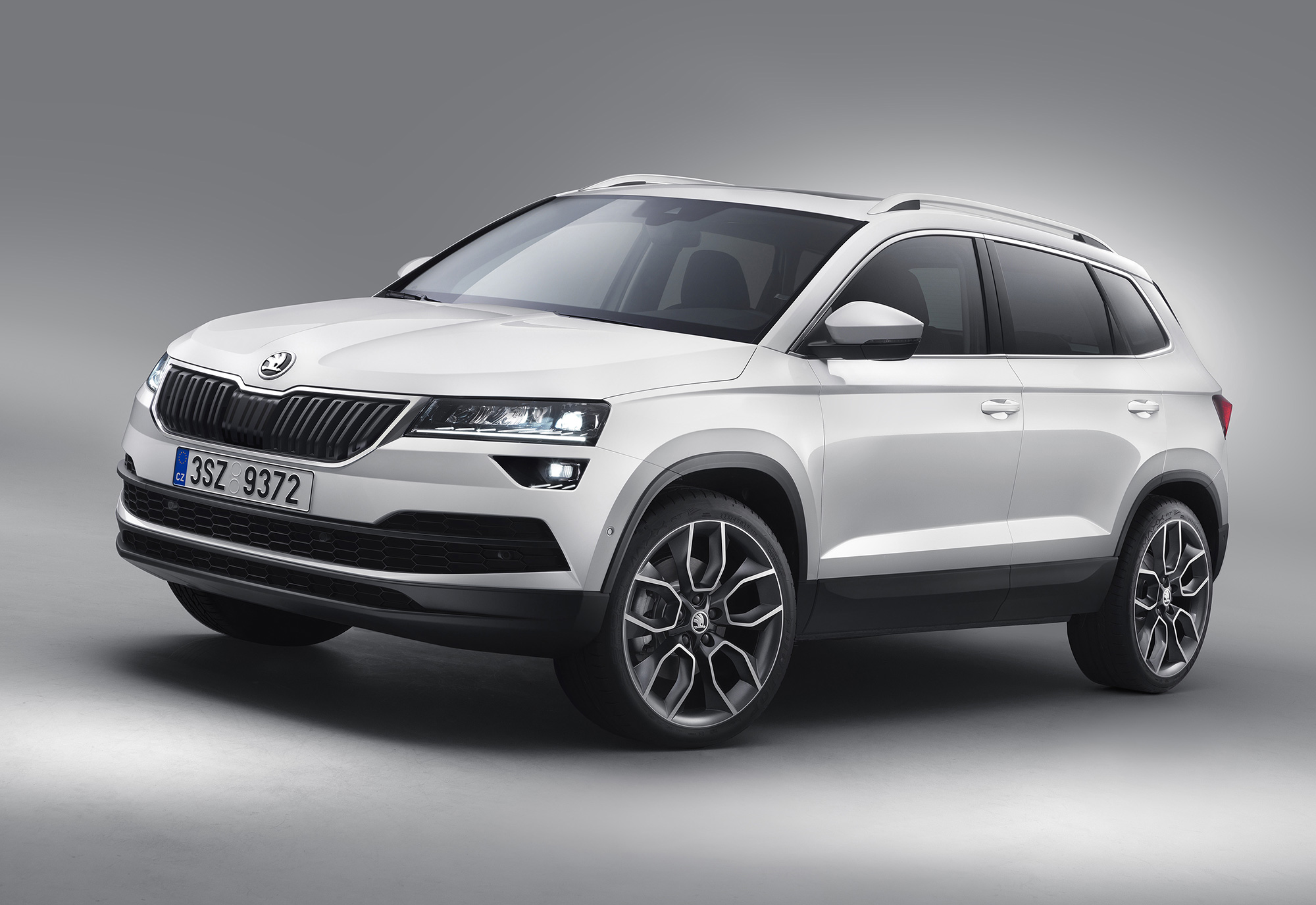
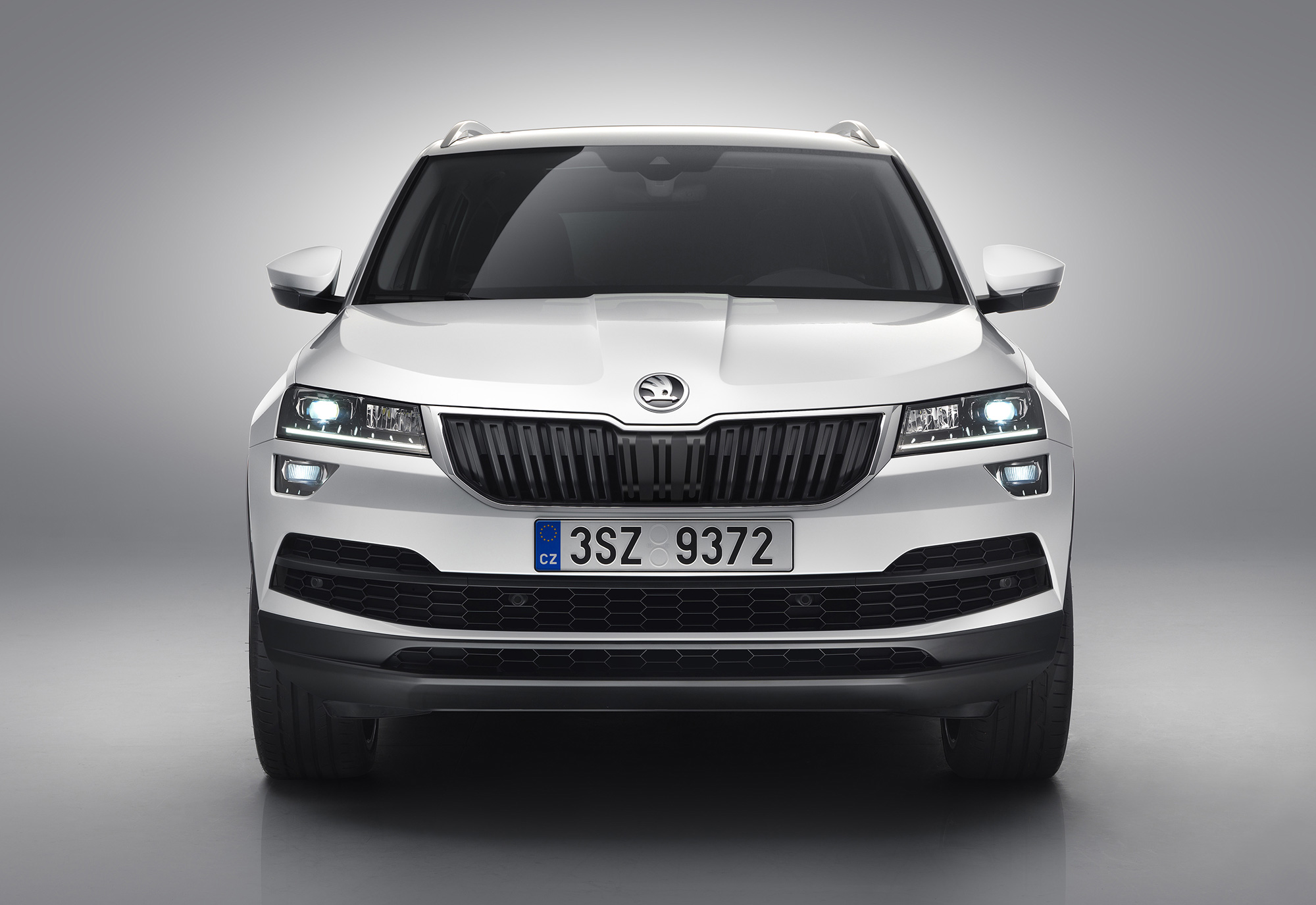
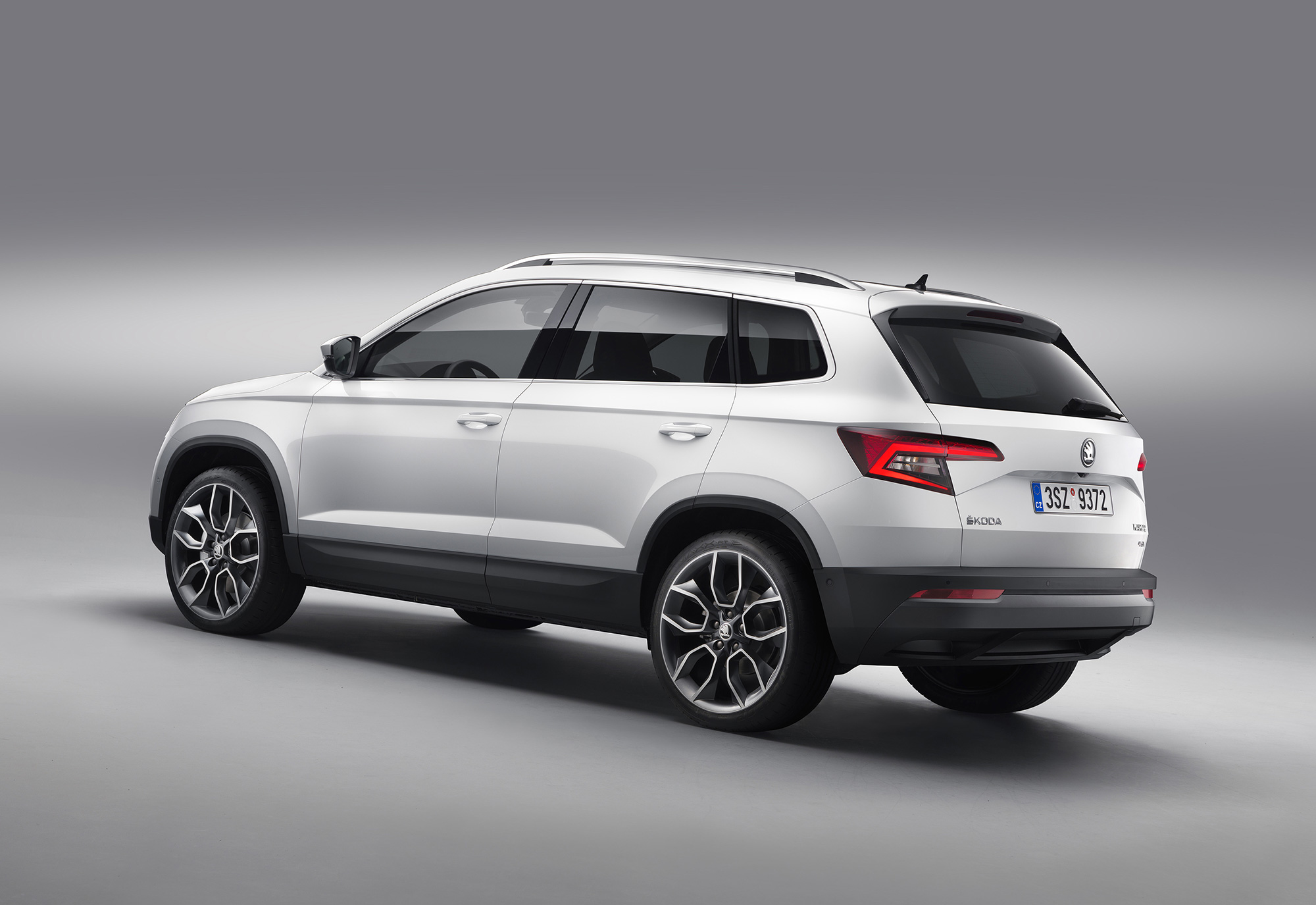
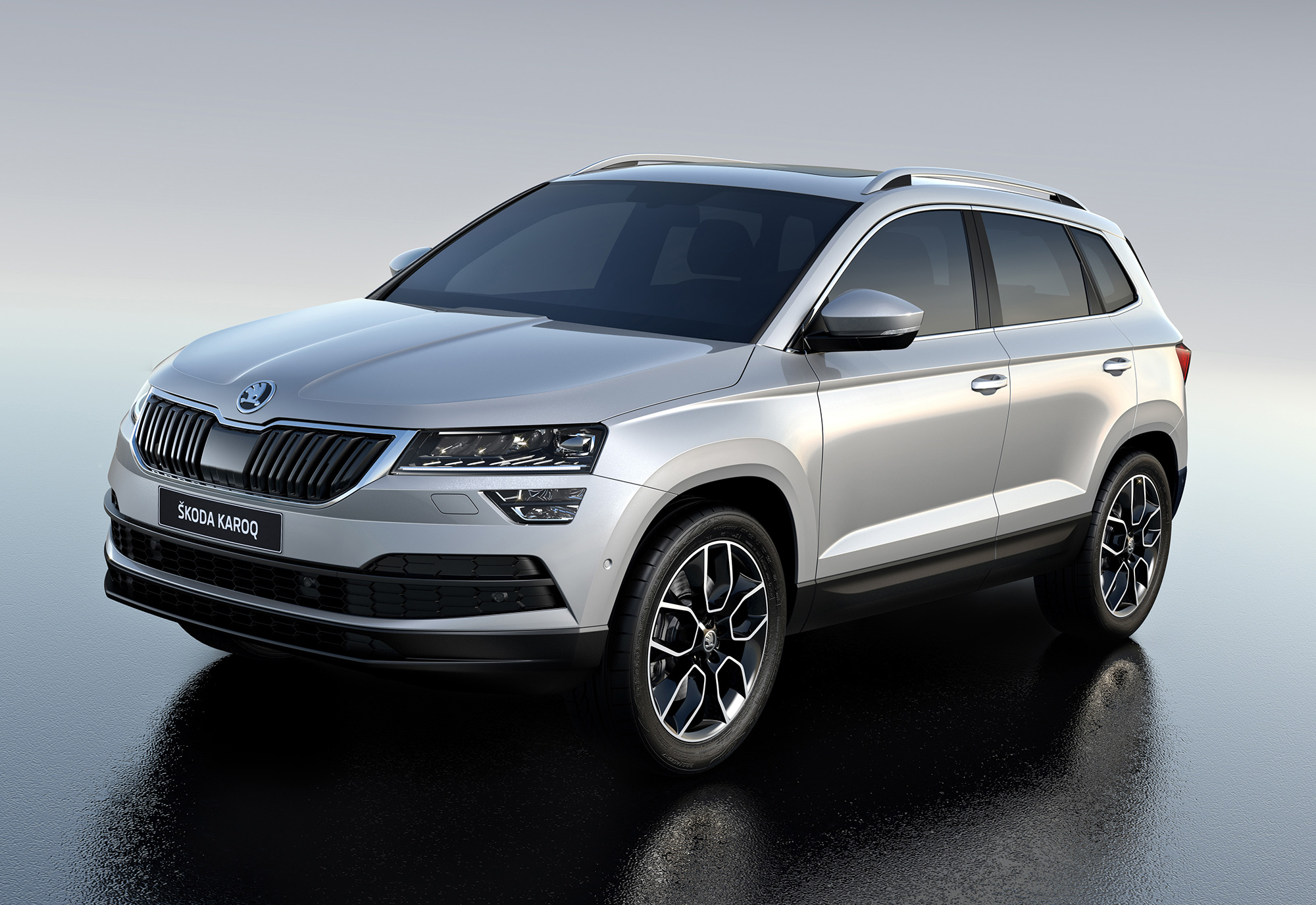
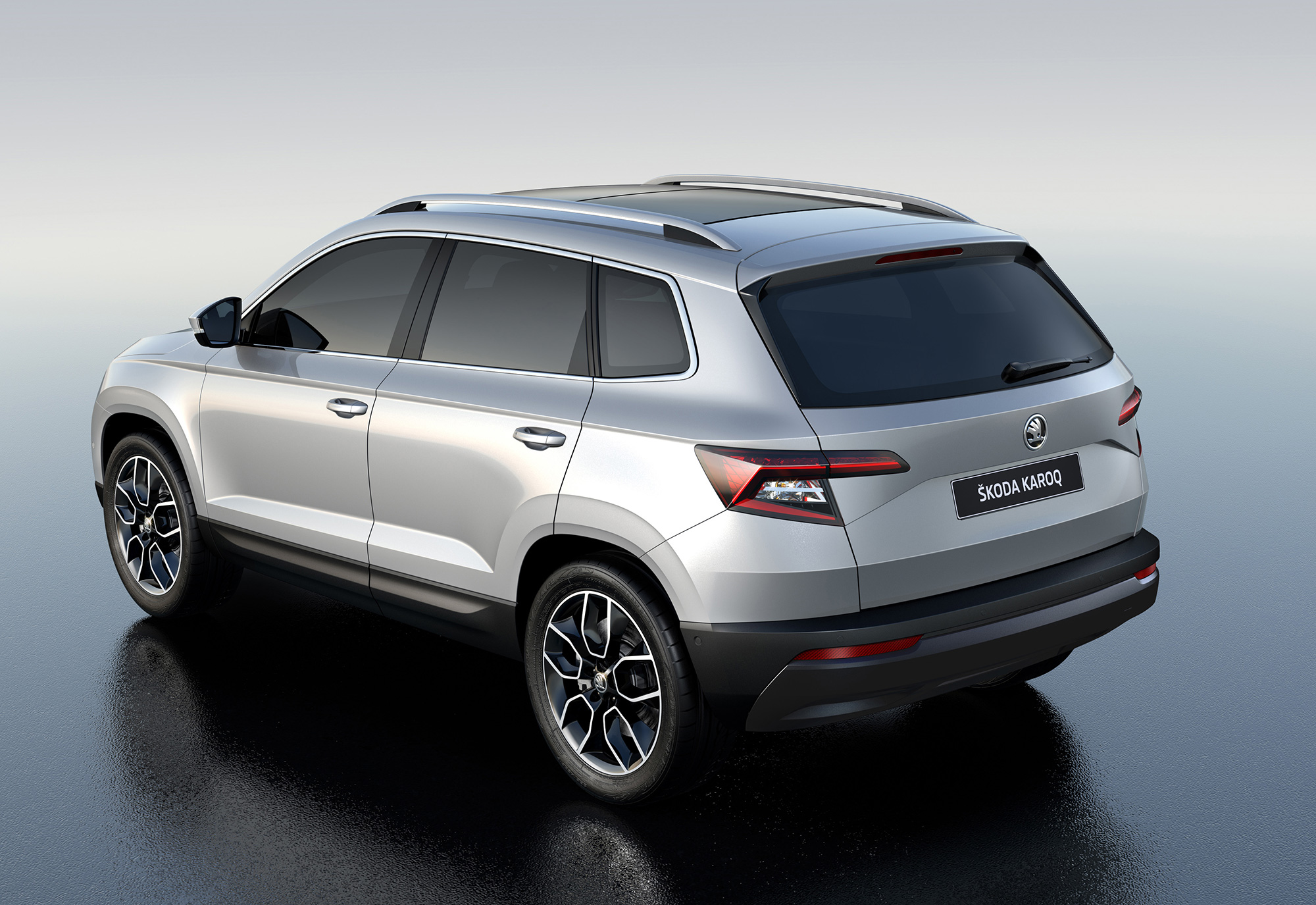
A new SUV from Skoda - the Karoq - has been unveiled.
The brand new compact model and Yeti replacement, ushers in Skoda’s new SUV design language and comes with ‘exceptional space’, new driver-assistance systems, full‑LED headlights and tail lights, as well as an onboard digital instrument panel.
Five engine variants are available from 85 kW (115 PS) to 140 kW (190 PS), of which four are new. All powertrains feature turbo-charged direct injection units as well as stop-start technology and brake energy recovery. With the exception of the most powerful diesel, all drivetrains can be ordered with a 6-speed manual gearbox or 7-speed DSG. The 2.0 TDI with 140 kW (190 PS) comes as standard with 4×4 drive and 7-speed DSG. The new 1.5 TSI has the special feature of cylinder deactivation.
The new compact SUV is fitted with 16- or 17-inch wheels as standard which are available with three different designs. 17-, 18- and 19-inch alloy wheels are optional extras.
On the inside, the rear-seats have a VarioFlex system. Longer items can be comfortably transported in the interior of the compact SUV – thanks to the folding front passenger seat. The luggage compartment has a capacity of 521 litres with the rear seats in place. With the rear seats folded down, the volume increases to 1,630 litres. The VarioFlex system consists of three separate seats, which can be individually adjusted and also be completely removed – and the Karoq is then converted into a 'van-like SUV', says Skoda, with a maximum load capacity of 1,810 litres. A 'virtual pedal' enables hands-free opening of the boot.
With the Driving Mode Select, 5 steering settings can be changed, as well as operation of the DSG transmission, and the settings of other systems in the Normal, Eco, Sport and Individual modes. The new compact SUV’s all-wheel drive also ensures ‘optimum handling’ on slippery terrain or when towing a particularly heavy trailer. It uses an electronically controlled multi-plate clutch. Various sensors (such as for rpm at the wheels, steering angle, longitudinal and lateral acceleration, throttle position, rpm, torque) continuously assess the driving situation and relay the measurements to the all-wheel-drive electronics, which then calculate and distribute the optimum amount of power.
Off-Road mode, which provides even better driving characteristics on rougher terrain, is an optional extra for the all-wheel-drive variants. To improve traction in Off-Road mode, the Traction Control System (TCS) permits a greater slip and the Electronic Differential Lock (EDL) reacts more sharply and quickly. Where necessary, Hill-Hold Control and Hill-Descent Control are also activated – the latter keeps the speed constant at the current level. The optional DCC shock absorbers change their characteristics, and the accelerator responds more gradually. The Anti-lock Braking System (ABS) varies its intensity, so that a wedge of earth can be formed in front of the wheels, thereby producing a braking effect.
Prices have yet to be announced.
